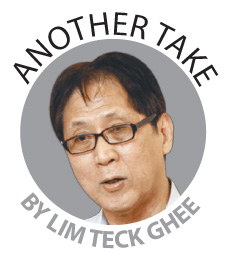LET’S put this subject in the public and policy spotlight with independent and rigorous studies.
When the Centre for Governance and Political Studies (Cent-GPS) released its findings that Chinese candidates obtained more job callbacks than their Malay and Indian counterparts with similar qualifications, it made news as if this was the first time that Malaysians had stumbled on the “shocking” revelation that racial discrimination is alive and well in the employment sector.
Since then, much of the feedback has covered methodological weaknesses, possible bias and motives behind the study.
Although these concerns are not trivial, the emphasis on issues of methodological interest is diverting policymakers and ordinary Malaysians from focusing on the elephant in the room.
The elephant is the state and its role in setting the stage for racial discrimination to not only take place in employment but also to ensuring that racial discrimination flourishes in the economy and society.
In response to the findings, calls are being made to punish employers through enactment of laws to make them desist in their so-called anti-national, anti-meritocratic and divisive practices.
But let’s ask first where these practices are rooted in and take their inspiration from. Let’s before rushing to new policies or laws have a deeper analysis into why this problem exists after 60 years of high rhetoric on the need for a Malaysian identity to overcome parochial racial sentiments.
Only after rigorous and independent studies as well as feedback from key stakeholders and state players can we begin to have a better understanding of why racial discriminatory practices are prevalent among employers.
A start has been made by the Cent-GPS and a few earlier studies. To correct what has been described as a decades old situation, more established university research centres and the government should carry out further studies and keep this subject in the public and policy spotlight.
Here are some suggestions on how researchers can extend the work on race issues in employment to inform any new anti-race discrimination policy targeting private sector employers.
Extend the scope of the current study to inquire into the hiring practices of the largest employers. The two largest are GLCs and the civil service. According to a Khazanah estimate, GLC employees in 2013 comprised around 5% of the national workforce of 14 million. The civil service has 1.7 million employees.
Examine the recruitment practices of GLCs and the civil service in selecting deserving applicants, irrespective of race. This investigation should cover the related concern with the promotion of staff – a subject of equal if not more importance in the employment market.
In 2009, when the 1Malaysia programme was introduced, then prime minister Datuk Seri Najib Razak promised that it would promote ethnic harmony, national unity and efficient governance. This move seems to have been a very belated response to make good the implementation of Article 136 of the Federal Constitution which states that all persons of whatever race in the same grade in the service of the federation shall, subject to the terms and conditions of their employment, be treated impartially.
How the 1Malaysia programme and any new programme is correcting racial imbalance in the employment practices of GLCs and the civil service – a commitment made as one of the two prongs of the New Economic Policy in 1970 – would comprise another key area of research.
The results of these studies on the hiring and promotion practices of the two foremost employers in the country should be disseminated to the private sector which has been accused of pursuing a “stark pro-Chinese bias”. That way the private sector and especially Chinese employers, will have an appropriate role model to emulate.
Others that can benefit from a better understanding of how the government through its control of the civil service and GLCs is dealing with racial discrimination include foreign investors, international organisations and the foreign media. The fight against racial discrimination is taking place all over the world. Many countries will be eager to learn from Malaysia.
There are likely to be critics of the above suggestions aimed at monitoring and checking racial discrimination in employment. Some cynics note that race matters in every aspect of life in Malaysia – be it economic, social, cultural or political. They maintain it is the leading factor accounting for the way in which government conducts its activities.
Hence instead of waging a losing battle against political reality and institutional mindsets unwilling to implement open non-racial positions, they argue that it is easier to implement a system of race-based employment quotas. Such an explicit system, coupled with meritocratic selection within the racial quota, would mean that we address the concern that racial discrimination is keeping out talent; and could provide for a more durable form of national unity.
Implementation of racial quotas would mean that both private and public sectors would work towards a level of staff racial profile that reflects the country’s racial population mix within a certain period – say 10 or 15 years.
By 2030 or 2035, each community would be able to see its racial group proportionately reflected in employment in industry, agriculture, education, services, etc. Besides application to employment at the lower levels, racial ratios would be made applicable to the senior and highest levels of banks, business enterprises, universities, the police and armed forces, the judiciary, etc that are now dominated by any one single race.
This solution to the issue of racial bias in employment will come for criticism as it may appear too radical or cynical. However it is one that many policymakers and citizens may have the least problem in understanding the logic in our race obsessed society and government.
Lim Teck Ghee’s “Another Take” is aimed at demystifying status quo orthodoxy. Comments: letters@thesundaily.com










